Part 6-EASTERN EUROPE: STRUDEL, SCHNITZEL AND STRAUSS, A FEW OF OUR FAVORITE THINGS
Part 5 was Slovakia, Once Again!
CZECH REPUBLIC
TOURISTS INVADE PRAGUE, THE CITY OF CONCERTS, CASTLES AND KORUNAS
Where we stayed:
The 78-room Grand Bohemia Praha is tucked neatly onto a side street within walking distance of famous attractions such as the Old Town Square, Old Town Hall, and Wenceslas Square.
Our room was a triangle, which seemed to make it feel larger. One thing did surprise me. I was startled while in the restroom to hear voices so loud I thought someone had entered our cute but efficient guestroom. Turns out there are speakers from the TV in the restroom so you never have to miss a single word! Breakfast was wonderful, an endless buffet of fresh breads, fruits, and prepared dishes, plus bottles of bubbly wine and a selection of juices to mix or drink separate. Russ and I did not attend
the Wolfgang Amadeus Mozart dinner concert held in the 91-year-old hotel’s ballroom two floors below the lobby, but we did peek in during the set-up. Absolutely gorgeous in ornate gold and white gilding, fancy moldings, and elegantly-appointed tables of fancy China and long-stemmed glasses. Those of our group who went raved about the quality of the performers, the orchestra and the fine dining.
What we learned:
Hello = dobrý den
Goodbye or see you later = na shledanou
Please = proslim
thank you = dekuji
Prague, capital of the Czech Republic, is one of the most visited cities in Europe. Pretty much before this trip, whenever I spoke with fellow/sister travelers, the two cities mentioned as “having been” or “want to visit” were Paris and Prague. Prague has been on Russ and my must-do list for many years. Prague officials predict that by the end of 2018, there will have been more tourists than residents. The downside is that the formerly safe city now attracts more pickpockets. Historical Prague is still a magical place, but it sometimes feels like you are at EPCOT instead of a real city.
The city is known for blown glass and garnet. Czech garnets are small, darker than rubies, and are usually set in silver or gold. Like anywhere you visit, check out the store’s reputation before investing in expensive jewelry or other items, such as the exquisite marionettes that are as fanciful and gloriously detailed as you find with Italy’s Venetian masks.
Czechs proudly claim to be the most prolific beer drinkers in the world. Both Budweiser and Pilsner have factories here. For the sake of research (LOL!) Russ sampled beer as often as possible. He pronounced the Budweiser tastes the same as in the United States, but the Pilsner Urquell, a Czech lager brewed by the Pilsner Urquell Brewery in Plzeň, was outstanding and tasted more full-bodied than that in the United States. Introduced in 1842, the Pilsner Urquell was the world’s first blond or pale lager.
The Czech Republic was one of three countries we visited on this Discovering Eastern Europe tour that has stayed with their own currency even though all three (including Poland and Hungary) are members of the European Union. The Czech Koruna is roughly 24.6 Kr to a $1.
When we first drove into the country, I couldn’t help but notice the multitudes of Soviet-era built apartment buildings. Even though here they have all been repainted in a variety of colors, we learned elevators are only available in buildings at least five stories high and there’s no guarantee they are actually operable.
Škoda has 20,000 employees in the Czech Republic. Already required to speak both German and Czech, they now have to learn English because of the increased volume of cars exported to the U.S.
Each section of Prague has its own city/town hall.
Families who can prove their property or belongings were confiscated by the Communists are entitled to their return, if still available.
Prague Castle Square contains a national Gallery of Arts. There is so much art that it all can’t fit into one building.
Many movies have been filmed in Prague, such as “Mission Impossible,” “Casino Royale,” and “Les Miserables” (the 1998 version with Liam Neeson).
Czech Republic is the least religious country among the Eastern European bloc. Of the roughly 10-1/2 million people, only 32% practice any religion. The largest share is Roman Catholic. There are about 3,000 Jews remaining after 80,000 perished in the Holocaust.
There are 12 UNESCO sites in the Czech Republic.
We never were able to visit the Czech Cubism Museum, built in 1911, but as someone who bakes, I found it interesting to learn that even their signature dessert, Black Madonna, is square shaped. We also didn’t have enough time to visit the Fred and Ginger Dancing House, a highly recommended modern building designed by Frank Gehry. It boasts a rooftop bar and handcrafted cocktails.
Women, even apparent tourists, dress up in Prague, as might be expected in any sophisticated European metropolis.
Even though there are good transportation options, there are also many privately-owned cars in Prague. Unsure why. Few places to park and gas is pricey.
German-speaking, bohemian Jewish novelist and short story writer Franz Kafka was born in Prague in 1883 and died in 1924 of tuberculosis. Any of his family members alive then were later murdered in the Holocaust.
Prague is called the City of 100 Towers, most of which belong to churches.
Every building has two posted address plaques. The numbers in red go back to the 18th century when Queen Maria Theresa began the system of numbering buildings. Buildings also posted symbols for what was contained inside, such as bakery, clothing, or tool shop. The blue numbers designate the building’s street position.
Wolfgang Amadeus Mozart loved Prague. He premiered his opera, Don Giovanni, here.
The Czech Republic is home to 2000 castles.
Czechs are credited with inventing lighting rods and soft contact lenses. They also performed the first plastic surgery in 1927. Albert Einstein used to hang out at the Café Louvre and Nikolas Tesla studied in Prague.
What we saw:
Prague’s Old Town (Stare Mesto) and the Castle District are linked by the Charles Bridge, built in 1410. Thirty statues reside on the stately bridge. If Old Town Square is the center of a wheel, the many streets jutting from it in a meandering pattern are the spokes. A walkable distance from our hotel, the Square contains the historic Astronomical Clock, currently under restoration. A covering cloth depicts the actual clock’s scenes of saints and sinners who parade around the cloth when the hour is struck.
Marilyn Monroe sang, “Diamonds are a girl’s best friend.” Only, for Countess Ludmila of Kolowrat, she made them a friend of the church. Here’s the story. The Tower of Loreto is a Roman Catholic holy shrine named for a place in Italy where the Casa Santa (Holy House) is located. A treasure room within the Tower of Loreto contains its most important item called the Prague Sun, a sun-shaped piece of jewelry composed of 16,000 diamonds set as the rays. When her third husband Charles IV died, he bequeathed the diamonds to Countess Ludmila. In her subsequent will, the Countess gifted the diamonds and requested they be made into a Diamond Monstrance (an open or transparent receptacle in which the consecrated Host is exposed for veneration) and given to the Church. The Diamond Monstrance, called the Prague Sun, was crafted in 1699. The oldest item in the Loreto Treasure is a gothic cup from 1510.
Diagonally across the street of the Tower of Loreto is the Prague Castle complex. One of the most beautiful buildings is St. Vitus Cathedral, the largest church in Czech Republic and a prominent example of gothic architecture, with high arches and stunning stained glass windows. One of the windows was hand-painted in 1931 by Alphonse Mucha, a Prague painter who gained fame for posters promoting actress Sarah Bernhardt’s plays. Construction of the present-day gothic Cathedral began in 1344 when the Holy See of Prague was elevated to an archbishop, but wasn’t completed until 1929… 585 years later.
The Royal Castle was originally built in 880. By the time Emperor Charles IV ruled, the country was at peace, and Prague Castle became an imperial residence with 700 rooms. Born in 1316, Charles IV was kidnapped by his father. He never saw his mother again. He returned to the now Czech Republic at 17 and had four wives. Until he married number four, a Polish girl 31 years younger than him, he had no children. She bore him four sons and two daughters. Called the Father of the Country, Charles IV advocated education and established the Prague Charles University, the first university in Central Europe. He also brought in and planted varietal grapevines from Burgundy, France. His favorite was the pinot gris grape.
Construction on the Castle continued during the reign of Charles’ son, Wenceslas and continued into the late 1400s when Vladislay Hall, the largest secular vaulted hall in Europe at that time, was built. The hall’s large windows are a prime example of the renaissance style in Bohemia. Due to wars and fires that followed, all the current windows were made in the 20th century.
Atop one tower is a 16-1/2-ton bell, the largest in the Czech Republic. Every year, the bells are run on September 11 to commemorate all those who died at the World Trade Towers on that date in 2001.
As part of the Royal Castle tour, we walked through the Golden Lane (Zlata Ulicka), a tightly knitted street of colorfully painted houses originally built in the late 1500s for Rudof II’s castle guards. The name derives from the goldsmiths who lived there in the 17th century. Artisans lived and worked there until 1950. Franz Kafka was one of those 20th century inhabitants. Today his abode is a small bookstore. The houses not currently used to sell souvenirs or crafts, such as marionettes, are furnished and preserved as they originally were by their inhabitant. Signage provides a short bio of the resident, such as the baker or psychic Matylda Prusova, whose mystic reading room stays ready for the next customer.
High on my list of must-dos was The Alphonse Mucha Museum, the only museum in the world dedicated to the life and work of the world-acclaimed Czech Art Nouveau artist. Though a fan of his stylized drawings of women since the 1970s (remember JOB papers?), I knew little about the depth of his work or that he was swiftly taken by the Nazis when they first invaded Prague. His detention led to ill health and he died in 1939. The museum is divided into seven sections, each featuring posters and panels of his collections, as well as a short documentary film, photos and memorabilia. Among the collection, I spotted the photo of Zodiac, his first work created for a calendar and which remains one of his most replicated works of art today. In fact, I have a favorite burnout velvet beaded coat with the woman’s flowing mane and astrology signs of Zodiac gracing the length of the back.
Prague’s Jewish Town (Josefov) borders the Northside of Old Town. Once the home to 25% of the city’s population, they found themselves outcast from Prague in 1748 by Queen Maria Theresa of Austria, who accused them of collaborating with the Prussian army. Maria Theresa was noticeably anti-Semitic, one of the reasons the Terezin concentration camp was named for her during WWII. Once Jews moved out and non-Jews replaced them, what had been a prosperous area morphed into slums. To clean the area up, many buildings were demolished. After 1900, the area grew once again, designed in Art Nouveau style. There are roughly 3,000 Jews in the Czech Republic, with 200 synagogues still standing. Of course, the history of Czech Jews is much more sordid, splendid, dramatic, and sad, but you can examine the 1,000 years of their existence in Prague Jewish Town in the Pinkas Synagogue.
At Pinkas Synagogue, one of the first buildings restored after WWII, we saw an emotionally disturbing collection of paintings and drawings by children imprisoned in a concentration camp and secreted in the bottoms of hidden suitcases that were discovered after the war. An art teacher had the children draw as a distraction. One child survivor of the war, who drew one of the pictures we saw at the synagogue, became a professional artist.
We heard about Maisel Synagogue, now serving as the exhibition space for the Jewish Museum; the Spanish Synagogue, considered the newest in the Jewish Quarter as it was built in 1868, and the Klausen Synagogue, which showcases Jewish traditions and customs. Our tour guide told us that 150,000 Jews are buried in the Old Jewish Cemetery, but there are only 12,000 tombstones. The dead were buried atop one another.
Once Amy and Paul, members of our tour group, raved about the ornate rooms and rich history detailed in the guided hour-long tour of the Municipal House (house for the citizens), we knew we had to go. Opened in 1912 on the site of the former Royal Court Palace, the Municipal House is one of the city’s grandest example of Art Nouveau architecture, though our quite knowledgeable guide described the edifice as a blend of neo-Baroque, neo-Renaissance, western and Oriental influences, and Czech Art Nouveau style. Today, the immense building houses an elaborate concert hall, an elegant French restaurant (where our group had our final dinner of the tour), a Czech beer hall styled restaurant with frequent entertainment, a traditional café, and the first American bar in the Czech Republic, a cozy enclave that resembles a retro men’s clubroom with low lights, dark woods, and an intimate atmosphere.
Russ and I had already enjoyed the building’s exterior design elements, from fancy stonework, gold trimmings, and frescos to the many decorative stained glass windows. As soon as we entered the lobby to buy the inexpensive tickets, our first view of the wide marble staircase leading up to 1,200 seat Smetana Concert Hall, affirmed this tour would be a visual treat. The Czech National Symphony Orchestra regularly performs at Smetana, an architectural gem with a mix of carved white stone and gold and illuminated by hundreds of lights. We didn’t hear a concert, but we did view the organ with 4,800 pipes. Sometimes a keyboardist is brought in to play one of two keyboards, dating from 1912 and 1918, respectively. Four murals representing allegories of various arts are painted on the walls above the balconies on each side of the grand hall.
We toured each of the smaller ballrooms. Three lady’s parlors, defined by lighter colors than the men’s parlors we saw later, were each themed to a specific motif. All the rooms are available for private affairs. The Confectionary Room resembles a French pastry shop from the 1920s. Art Nouveau ceilings enhanced by flowers set inside circles is the motif for this room. When the room is rented, desserts are set into cabinets behind a display case. The Moravian-Slovakian parlor features a snail motif and an original, still working, fountain named for Czech writer Božena Nemcová, whose head appears on the $500 crowns. The third lady’s parlor is the Oriental Parlor, with a minaret motif.
The first men’s parlor, Palacký Hall, is used for small concerts and dances, and is dedicated to František Palacký, a 19th century historian and politician. The most requested event venue is the Mayor’s Hall, designed and adorned with paintings by Alphonse Mucha. Murals of important Czech historic figures grace the circular room’s dark blues and champagne-colored marble walls. Rieger Hall contains two massive paintings: one of five Czech writers and the other of artists representing diverse fields from sculptors to composers. There are two ornate ironwork-adorned elevators, original to the building’s opening in 1912, that are used today by the Mayor or special event guests.
What we ate. What we drank:
Two of the more unusual traditional dishes in Czech Republic, for which I was unfamiliar, are pork knuckle (a pig’s knee cap) and steamed dumplings or a white steamed bread sans crust, either of which is served as a side dish and meant to be dipped in the dish’s sauce. Traditional cuisine has been heavily influenced by the Austro-Hungarian Empire. Goulash soup is thicker than in Hungary.
There is an insider’s joke about this landlocked country, with only one percent of the population identifying as religious. Good Catholics around the world may eat fish on Fridays, but here, the only time Czechs eat fish is Christmas.
When we first arrived in Prague, our fabulous Odysseys Unlimited Tour Director Silvija Marta Horsta led us to Kolkovna Restaurant, a large restaurant with an upstairs and a quieter downstairs seating area that resembles a cafeteria setting. Reasonable prices. Extensive menu. I devoured a smoked breast of duck, honey pear and pecan salad, topped with a light dressing. Russ’ chicken wings were messily saucy and were accompanied by two small pieces of roasted corn on the cob. He ordered a side of French fries and toasted garlic bread. We were puzzled by the piece of garlic sitting in a side bowl until we were told they bring the toast… you rub the garlic on it. Russ says it all went down pretty nicely with a liter of Pilsner Urquell!
Praha (Prague) Chocolate Museum in Old Town is a wonderful place if you want hard candies or chocolate in any possible design. We were in search of gelato, tucked away in the very back of the shop. We had to first bypass fancifully decorated chocolate bars and a large section of chocolate body parts to get there, but oh-so-worth it according to my gelato-loving husband, Russ. He ordered one scoop of caramel Belgian chocolate and his usual favorite: pistachio. It was rife with roasted ground pistachios.
Before browsing the Alphonse Mucha Museum, we lunched across the street at Café Palace, a lobby café in the upscale Palace Hotel. I feasted on a perfected roasted, crispy-skinned duck confit that sat atop a mound of savory cabbage interlaced with diced sweet potatoes. I dipped my duck into the pool of brown gravy surrounding the mound, leaving not a morsel. I drank a locally-produced Frankova Red wine, with an intense pop of cherry, and lingering notes of vanilla and tobacco. Russ’ veal schnitzel covered the plate, as is common in Eastern European restaurants. He proclaimed the lightly-battered schnitzel the best he had eaten on this trip. It came with fluffy mashed potatoes and he drank his new favorite Pilsner Urquell beer.

Our pork medallions with mushroom gravy and smashed potatoes at Francouzska Restaurant, on the ground floor of the Municipal Building
Final Odysseys Unlimited tour night dinners are always a festive evening of food, shared memories, and the chance to dress up and enjoy one of the city’s best restaurants. So it was that our group dined on French cuisine at the highly-rated Francouzska Restaurant (Francouzská restaurace Art Nouveau) on the ground floor of the Municipal House. The restaurant is the type of sophisticated elegance you’d associate with The Great Gatsby era: crystal-draped chandeliers, muted sound, and waiters appropriately stuffy for the venue. (We were actually “shhhhhed” and told our gleeful laughter was disturbing others.) Our meal began with a wonderful variety of fresh breads and vegetable soup. We both chose the pork medallions with mushroom gravy, mushrooms, and boiled smashed potatoes. Dessert was an artfully plated cinnamon ice cream and chocolate mousse. Russ and I both found the Portuguese merlot, 15 Cuveé from Jakostni Vino S Privlastkem, to be too acidic and switched to the white, Biza by Müller Thurgau, Pozdní sběr, 2016. Much better.
Many hugs, long goodbyes with promises to stay in touch later, we departed to pack up for the next day’s travel. For seven of us, the journey was not over. We were headed to Berlin, Germany for an exciting Odysseys Unlimited-arranged extension tour.
Coming in Part 7 – Berlin Reflects The Past As It Marches Forward
www.grandhotelbohemia.cz
www.hrad.cz/en/prague-castle-for-visitors
www.prague.eu
www.mucha.cz
www.prague.cz/jewish-quarter
www.pragueexperience.com
www.kolkovna.cz/en
www.choco-story-praha.cz/?lang=en
www.palacehotel.cz
www.francouzskarestaurace.cz
Karen Kuzsel is a writer-editor based in the Orlando area who specializes in the hospitality, entertainment, meetings & events industries. She is an active member of ILEA and MPI and is now serving on the 2017 – 2018 MPI Global Advisory Board for The Meeting Professional Magazine for the third consecutive year. She is a member of the Society of Professional Journalists. Karen writes about food & wine, spas, destinations, venues, meetings & events. A career journalist, she has owned magazines, written for newspapers, trade publications, radio and TV. As her alter-ego, Natasha, The Psychic Lady, she is a featured entertainer for corporate and social events. karenkuzsel@earthlink.net; www.ThePsychicLady.com; @karenkuzsel; @thepsychiclady. Food photos for this series by Karen Kuzsel.
All other Photos by Russ Wagner, a retired government planner/builder who has a passion for trains, travel and taking photographs.


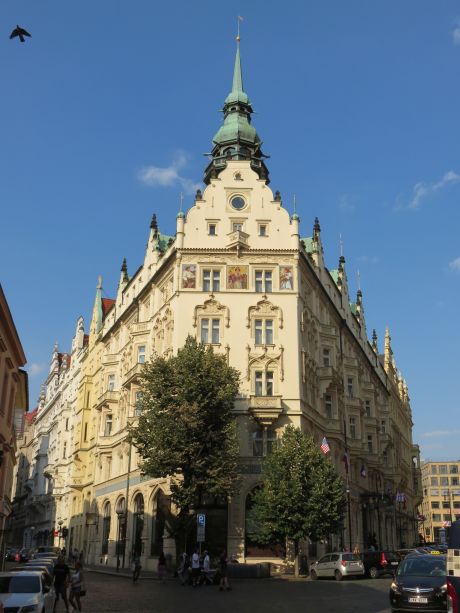










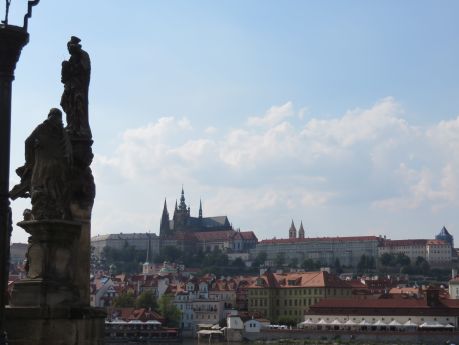
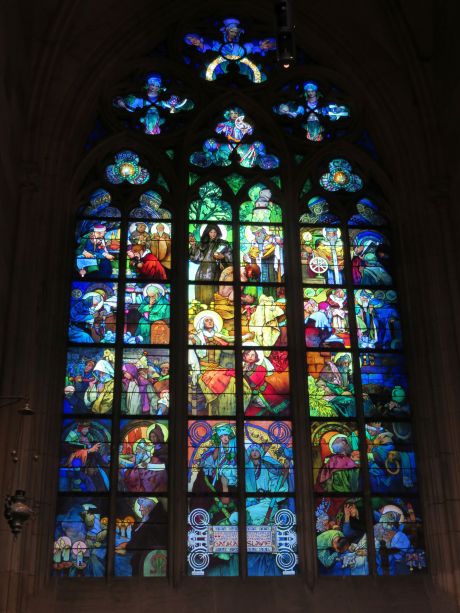













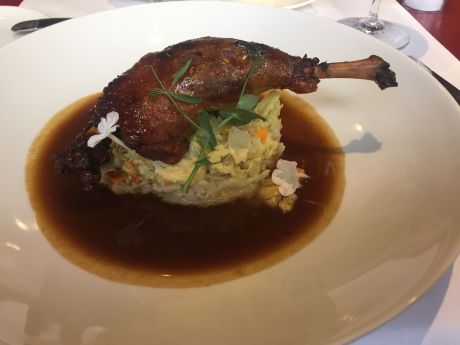


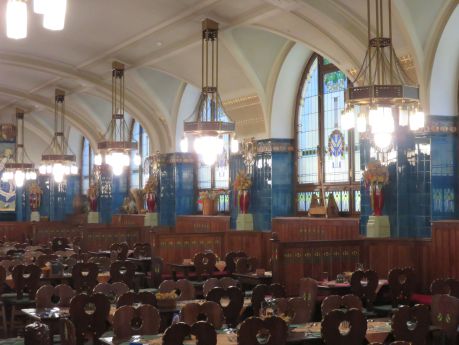
Leave a Reply
Want to join the discussion?Feel free to contribute!